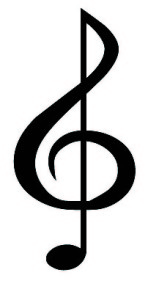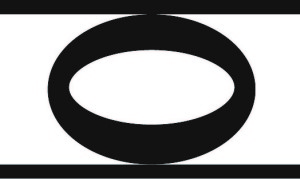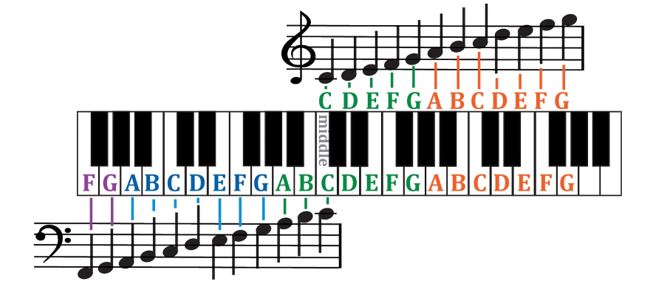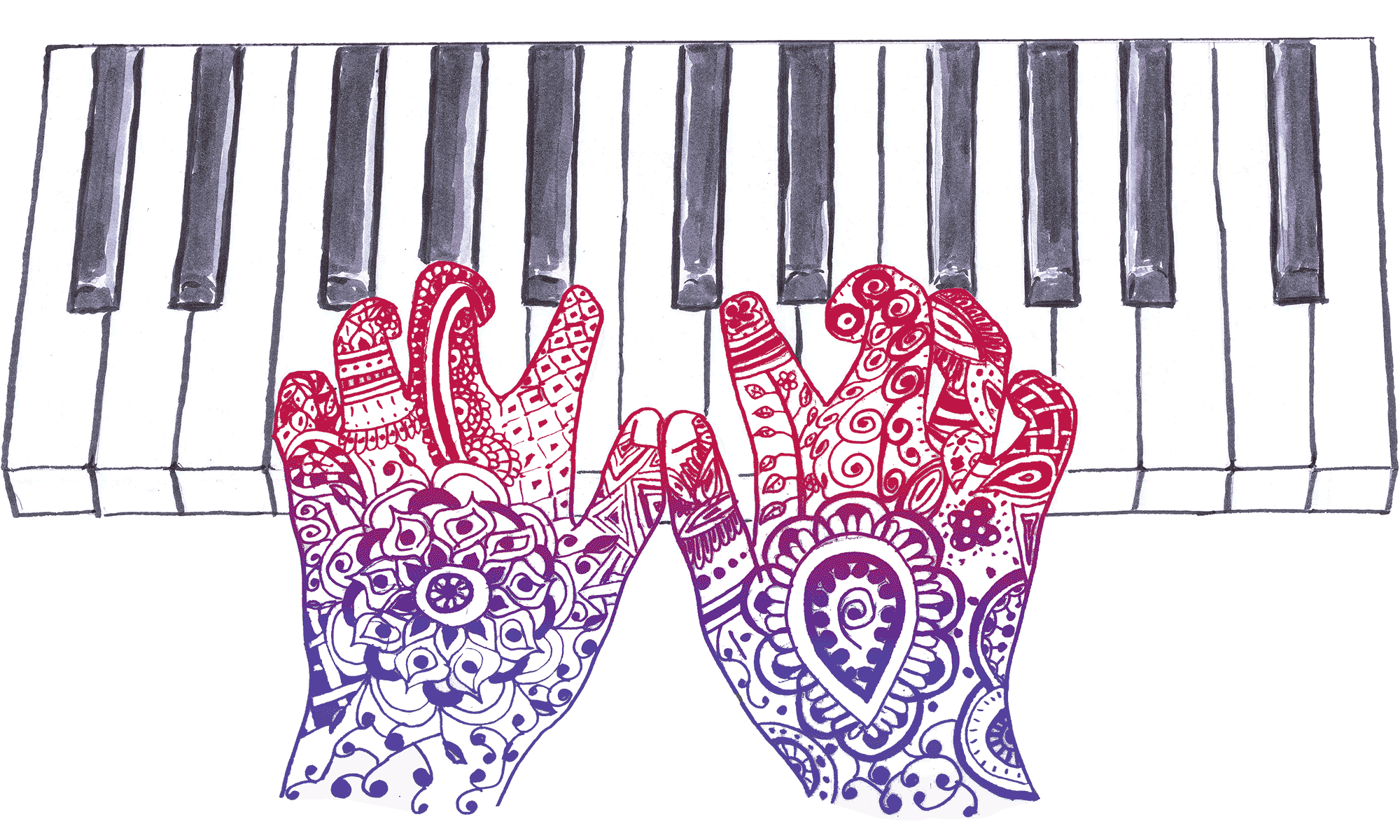Part 1 – Reading Piano Notes
- Music uses the alphabet from A-G over and over.
- Notes and symbols are put on the staff to tell you what to play.

- A treble clef
 on the staff shows to play notes in the high area of the piano.
on the staff shows to play notes in the high area of the piano.
A bass clef ![]() on the staff shows to play notes in the low area of the piano.
on the staff shows to play notes in the low area of the piano.
- Each line and space on the staff stands for a note on the piano
![]() LINE NOTE: Note goes on the line like a marshmallow on a stick or a bead on a string.
LINE NOTE: Note goes on the line like a marshmallow on a stick or a bead on a string.
The line goes through the middle of the note.
 SPACE NOTE: Note goes in the space between two lines.
SPACE NOTE: Note goes in the space between two lines.
The lines touch the bottom and/or top of the note.
Worry about correct notes first, then add rhythm later.
(See “Understanding Rhythm is a piece of cake” and “Adding Rhythm”)
- Put your right hand in Middle C position. (One finger on each key.)
Look for the set of two black keys under the piano or keyboard label.
- Put flash cards on music stand in C, D, E order.
Start with only three notes. When you introduce too many notes at a time it takes much
longer to master them. This doesn’t mean you can’t learn to play harder pieces right away but practice reading skills by adding small note regions at a time.
(pdf of flash cards below)
- Quiz on notes C, D, E in right hand. Play and say the notes in order, then out of order.
- Have someone point to flash cards randomly to help you quiz.
- Rearrange the cards in different order and play them.
- Use ‘Piano Notes Pro’ app on the ipad set to just notes C, D, & E.
- Use information to play songs until notes are mastered before adding new notes.
(9 songs using C, D, & E available in “Treblemakers Piano Method Primer A”)
pdf of first C, D, E song below
How to Know When Information is Mastered
If you can come back to information fresh (not having just used it) and you still know it inside and out, it is mastered. It can seem like you know something well while you’re working with it because the information is stored in your working memory. Working memory is temporary memory that allows you to do something in the present and is not designed to hold memories for long periods of time. However, if you revisit the information at regular intervals over time, this tells your brain you’ll need to keep the information causing it to be stored in long term memory. Because of this, doing a little everyday is much more effective (and easier) than trying to do long practices only once or twice a week.
Part 2: Adding Rhythm
As soon as you can play the notes accurately, it’s time to add rhythm. There are many systems to perform and learn rhythm but most aren’t sustainable as rhythms get more complicated. In order to keep your place in the music and read tricky rhythms you need to be able to count them out properly using the beats of the measure. It’s a good idea to form habits and use systems that WON’T have to be replaced later. The system you will learn here makes it easy to step into reading rhythms counting them correctly. To understand how rhythm works in more detail, see “Understanding Rhythm Is A Piece Of Cake.”
Let’s use the example below:
- The time signature
 indicates there are four beats per measure
indicates there are four beats per measure 
with the quarter note getting the beat.
- The beats are written out under the notes.
(If you are using a different song, write the beats in. The top of the time signature tells how many beats to divide the measure. Be sure to space beats evenly throughout measure.)

![]() Whole Note = 4 Counts
Whole Note = 4 Counts ![]() Half Note = 2 Counts
Half Note = 2 Counts ![]() Quarter Note = 1 Count
Quarter Note = 1 Count
- Look at the first note. Is it a whole note, half note or quarter note? (see above)
Don’t worry about what line or space the note is on, just what does the note look like?
Does it have a stem? Is it filled in?
Answer: Quarter Note
- How many counts is the note worth?
Answer: 1 count
- Since a quarter note is worth one count it gets one number underneath.
- Put a box around the number under the note. (beat 1)
- What kind of note is the second note?
Answer: Quarter Note
- How many counts is the note worth?
Answer: 1 Count
- Put a box around one number underneath the note. (beat 2)
- What kind of note is the third note?
Answer: Half Note
- How many counts is the note worth?
Answer: 2 Counts
- Put a box around two numbers under the note. (beat 3 and beat 4)
- Continue until all rhythms are boxed.
- Count evenly out loud while playing. Hold notes for the duration of the counts in the box under it.
Now that you can add rhythm to your playing, make sure that you are playing in time. Three great ways to work on playing in time are by:
- Playing along with duets either recorded or live players.
- Playing along to the Metronome.
- Playing along with a drum loop. Can be found on most keyboards or inside recording programs such as Garageband.
Playing in Time: Beats go by evenly like a clock.
Tempo: How fast beats go by. Measured in bpm (beats per minute).
Tempo Settings: While there are general tempo descriptions such as allegro or moderato, these are general descriptions about how to play music. There is not an agreed upon speed range for these since these came about before metronomes existed. It is better to use specific bpm speeds which you can set on your metronome.










